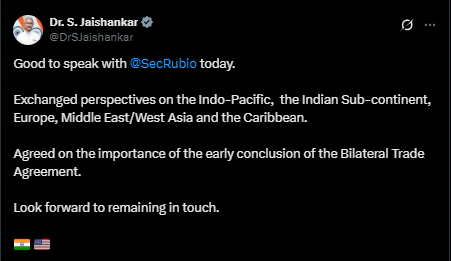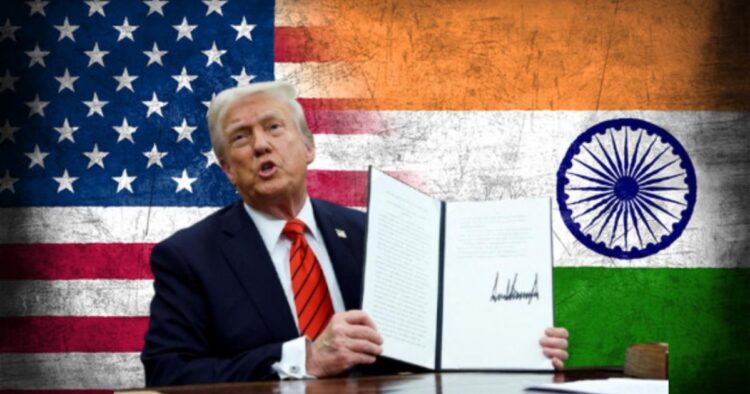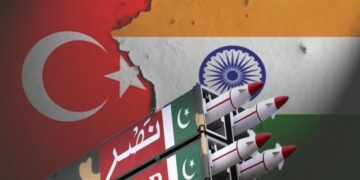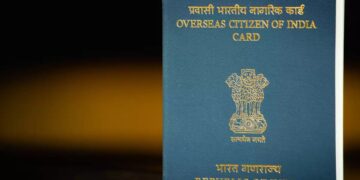KEY POINTS
- US Imposes 26% Tariff on Indian Goods, Risking Major Export Losses
- India Pushes For Fair Trade Deal Without Compromising National Interests
- Opportunity to Boost ‘Atmanirbhar Bharat’ and Global Trade Ties
In the middle of rising global economic tension, a critical phone call between India’s External Affairs Minister Dr. S. Jaishankar and newly appointed US Secretary of State Marco Rubio may determine the future of India-US trade ties. But as the US under President Donald Trump slaps India with harsh new tariffs, the question arises: Should India continue to play the diplomat, or is it time to strike back with firm trade countermeasures?

America’s “Friendship” Comes with a 26% Price Tag
Let’s not sugarcoat it: The United States, while calling India a key partner in the Indo-Pacific, has now decided to impose a staggering 26% tariff on all Indian imports. The first phase- a 10% base rate- was enforced on April 5. The remaining 16% is to follow on April 9. These sudden duties not only undermine the spirit of partnership but also raise a serious question: Is Washington taking advantage of India’s strategic silence?
Financial markets certainly didn’t take the news lightly. On the very day of the announcement, India’s Sensex and Nifty crashed by over 3%, reflecting fears of a deeper economic rift between the two democracies. Global shockwaves were felt as countries across the world reeled from similar tariff hikes. Yet, amidst the chaos, India remains composed, at least for now.
India’s Strategic Patience: Strength or Softness?
The Indian government has not retaliated- at least, not yet. Instead, it’s pursuing the long-awaited Bilateral Trade Agreement (BTA) with the United States. Jaishankar, after his call with Rubio, publicly reaffirmed India’s commitment to a “fair and balanced trade relationship.” While this shows India’s maturity and long-term vision, it’s also worth asking, what has India received in return for such restraint?
According to the Global Trade Research Initiative (GTRI), India stands to lose $5.76 billion in exports this year alone due to the new tariffs. Despite the massive setback, India still hasn’t imposed any counter duties. Is this diplomacy or delusion?
The Bilateral Trade Agreement under discussion seeks to reduce tariffs, improve market access, and strengthen supply chains between India and the US. But this vision stands in sharp contrast to Washington’s current posture. The US continues to raise objections to various Indian policies, ranging from internet shutdowns and agricultural norms to price controls on medical equipment and data localisation laws. These so-called “trade barriers,” however, are deeply embedded in India’s domestic governance and consumer protection systems. In reality, they reflect national priorities, not protectionism. So when critics ask what the deal is really about, the answer lies in this battle of perspectives: the US wants freer access to Indian markets for its dairy, medical devices, and tech, while India is fighting for fair treatment for its exports like textiles, pharmaceuticals, and IT services.
Washington’s Hypocrisy: Trade Friends or Economic Bullies?
The US continues to criticize India’s trade policies through its ‘Foreign Trade Barriers’ report, highlighting everything from internet shutdowns to dairy feed regulations. But let’s be honest. Is this about fairness or just another way to force open India’s markets for American agribusiness and big pharma?
Criticism of India’s GM-free food import rules, data localisation norms, and price controls on medical devices conveniently ignores India’s sovereign right to protect its consumers and privacy. India is not a pushover nation. These are not trade barriers, they are national priorities. If America truly considers India a partner, should it not respect that?
The Silver Lining: A Push for ‘Atmanirbhar Bharat’
India can, and should, turn this crisis into an opportunity. With the US simultaneously targeting China with similar tariffs, global supply chains are already looking for new homes. India is the natural alternative. From electronics to pharmaceuticals to auto manufacturing, India stands to benefit if it capitalizes on this shift.
Indian automakers like Tata, Mahindra, and Maruti Suzuki may soon become more attractive to US buyers if European and Chinese models become pricier due to tariffs. It’s a moment for Indian industry to shine, if the government ensures the right support systems are in place.
This is also the right moment for India to double down on its “Make in India” initiative. The direction India takes now will decide whether this trade blow becomes a long-term setback or a stepping stone toward self-reliance. The country can push for tariff exemptions from the US, while simultaneously negotiating smarter, deeper trade alliances with regions like the EU, Southeast Asia, and Africa. This diversification strategy will shield India from becoming overly dependent on any one power, especially one that shifts its policies with changing administrations.
When you aim a gun at others, make sure it doesn’t fire back – that’s exactly what America might face after President Donald Trump’s latest move on global tariffs. READ MORE…
With the US trade deficit with India now ballooning to $45.7 billion, there’s pressure from Washington to strike a deal that favors American exports. But that doesn’t mean India has to concede. In fact, the greatest challenge now lies in resisting US pressure while protecting India’s long-term economic interests. India must also be mindful that behind the push for a deal lies an agenda to break open Indian markets for American corporations in sensitive sectors such as agriculture, pharmaceuticals, and defence.
India’s approach to this deal has so far been measured, grounded in diplomacy, and aimed at a sustainable solution. However, experts warn that India must now play hardball, not by being aggressive, but by being unapologetically clear in its priorities. A fair trade agreement must work both ways. It cannot be tilted in favor of American exporters at the cost of Indian sovereignty and consumers.
The truth is, while the India-US trade deal could open doors for market access, it also demands clarity on sensitive issues like tariffs, IP rules, and data laws. The challenge for India lies in managing pressure without compromising sovereignty.

















Comments